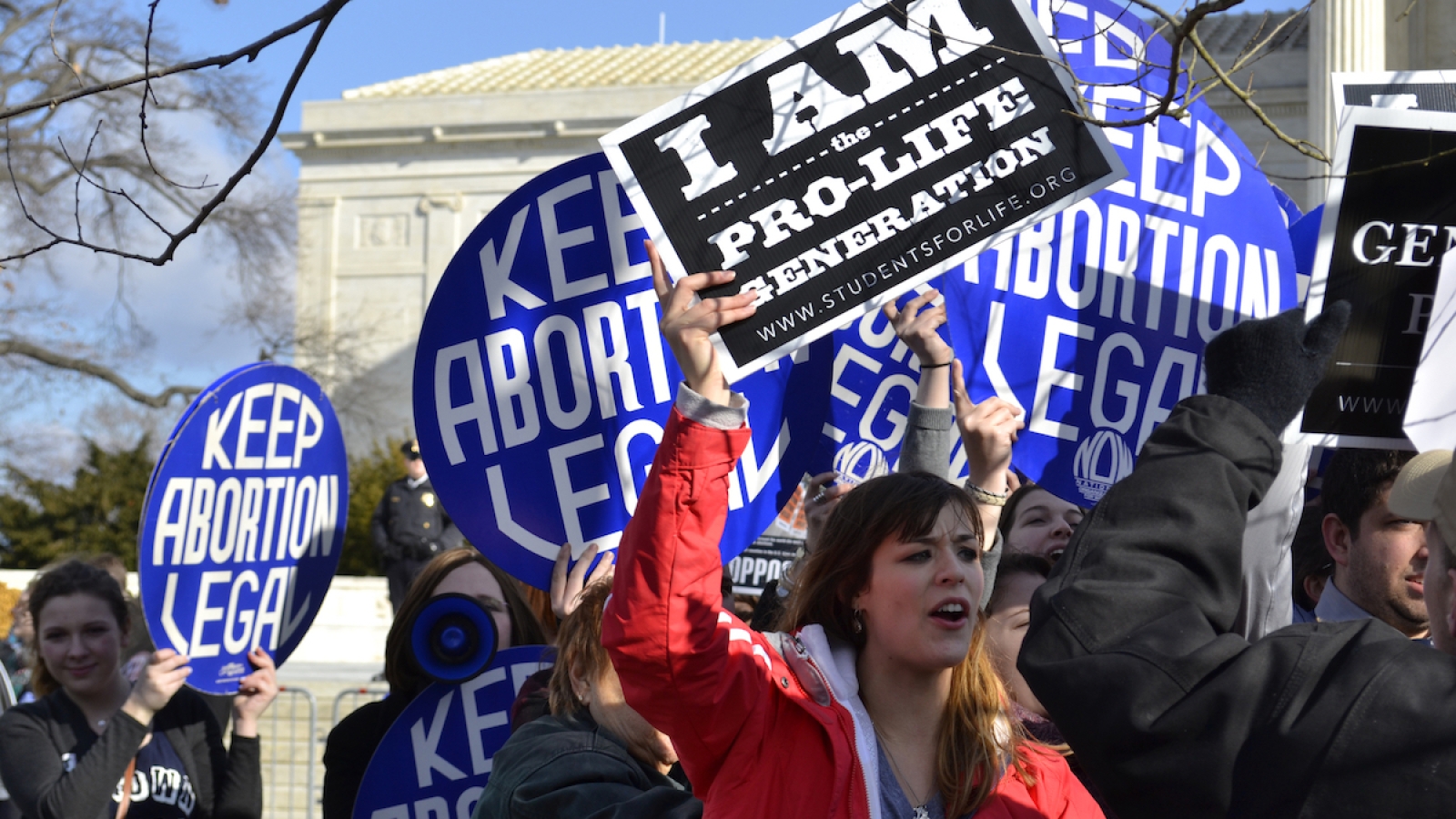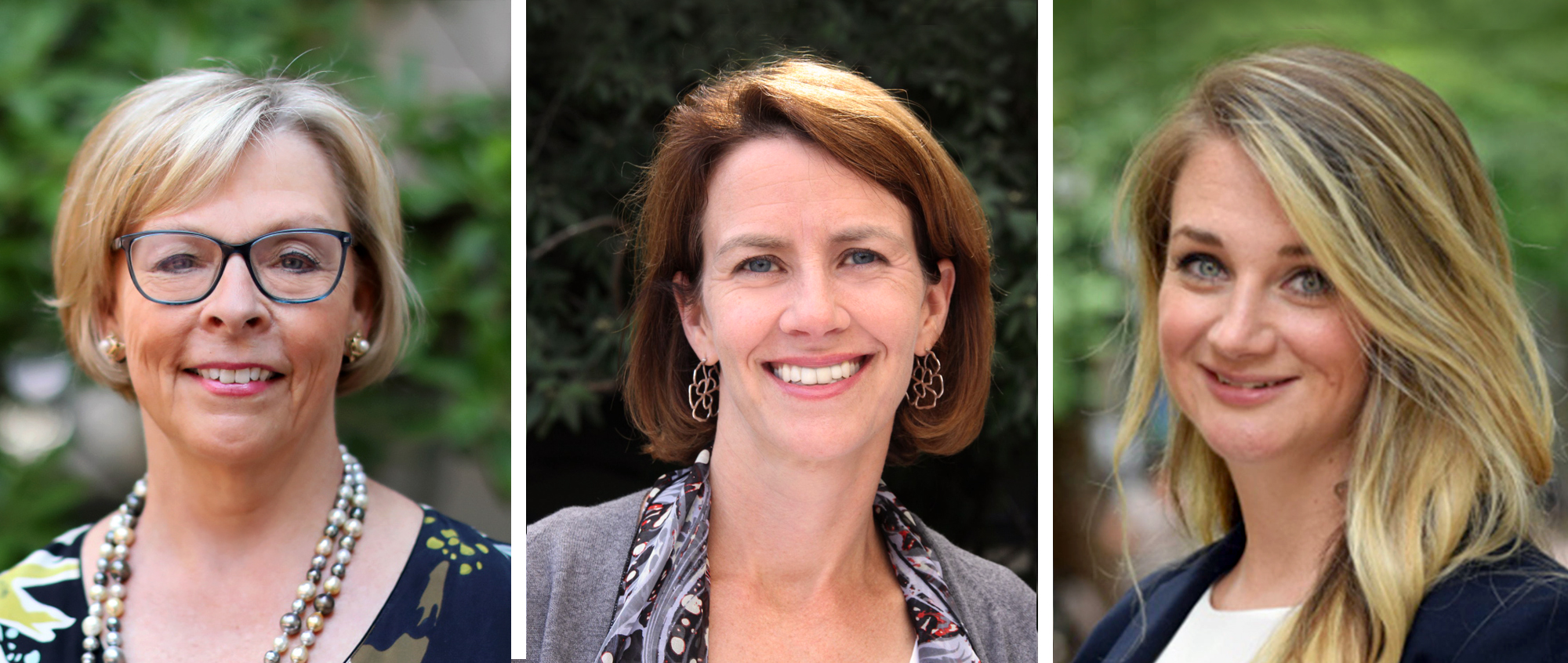One Year Post-Dobbs, What’s Actually Happened?
Four takeaways from Penn Arts & Sciences researchers in the aftermath of the 2022 Supreme Court decision overturning the constitutional right to an abortion.

June 24 marked one year since the Supreme Court overturned Roe v. Wade after nearly half a century. That decision, stemming from the case Dobbs v. Jackson, gave states the right to make their own decisions about abortion access.
Many have since sought to restrict or ban abortion altogether, says Marci Hamilton, a professor of practice and founder and CEO of the nonprofit think tank CHILD USA. “From my perspective, it’s a mixed bag in the states—and that’s what the Court intended,” she says. “This uneven distribution of women’s basic health needs and rights to control their bodies is corrosive to civil liberties generally. It has empowered and motivated the patriarchal strains in the culture that endanger women, children, and the vulnerable.”
The recent approval by the Food and Drug Administration of the first over-the-counter birth control pill in the U.S. won’t make a difference in the short term, she adds; it won’t be available until at least early 2024 and the cost is still unknown.
Hamilton, along with Paula Fomby and Courtney Boen, both from the Department of Sociology, offer four insights into what has actually come to pass in the wake of Dobbs.
1. Half of all U.S. states have banned or restricted abortions. Just seven have enacted protective shield laws.
According to Hamilton, states currently fall into three categories: those that have put bans in place, including total and time-limited bans; those that have attempted to implement bans but have been held up by state courts; and those that continue to protect the right to abortion.
“By a slight margin, states have passed more bans than there are states left that protect the right to abortion,” she says. “And despite their unpopularity with a large percentage of Americans, bans in some places are getting more severe.” Hamilton brings up Florida as an example. That state started with a ban that wouldn’t allow abortion past 15 weeks, yet recent legislation banned it after 6 weeks (though it will not take effect until the State Supreme Court rules on the constitutionality of the 15-week ban).
2. Fewer abortions are happening and where they take place has shifted.
In the half-year period immediately following Dobbs, from July through December 2022, more than 5,000 fewer abortions per month, on average, occurred in the United States, according to a recent report from the Society of Family Planning, which has kept close watch on these numbers since the decision. “Not only that, but that same report documented reductions in abortions in states that banned abortion, as well as some evidence of increases in abortions in border states—those that didn’t ban abortion but which neighbor places that did,” says Boen, assistant professor in sociology and the graduate group in demography.
That doesn’t mean the need for the procedure has decreased, she emphasizes. “Rather, it suggests that pregnant people living in places with abortion bans are traveling, sometimes extremely long distances and under dangerous conditions, to get abortions. We know not everyone has the resources to do this, and we know that the people who can’t afford to travel for abortions are disproportionately Black and low-income.”
3. The fear that this ruling would disproportionately harm marginalized populations is starting to play out, though it’s too early to tell the full effect.
“The circumstances under which people start and grow families are largely dependent on where they live,” says Fomby, a professor of sociology who studies the intersection of families and social institutions. “Dobbs reinforced that variability by increasing the likelihood that women and their partners in some states—most often, relatively poor states with high levels of racial inequality—will experience profound stress and hardship associated with unintended birth, pregnancy complication, and severe childhood illness.”
This will likely have long-term consequences. “Children whose births are unintended have poorer health, weaker emotional attachment to their parents, and a higher risk of experiencing or observing domestic violence compared to children whose births are intended,” Fomby says. “And parents who experience an unintended birth have less control over whether to remain employed, where to live, and whether to remain in what might be a strained relationship.”
Emotional stress isn’t the sole concern either, Boen notes. For some, having access to abortion care means the difference between life and death. Relative to other high-income countries, pregnancy-related mortality in the U.S. has been “abysmal” of late, she adds, “and those risks have been especially high for Black people because of systemic racism. Researchers projected that the Dobbs decision would only make the situation worse—further increasing pregnancy-related health and mortality risks and exacerbating already devastatingly wide racial inequities in risk.”
Here Boen mentions work from Amanda Stevenson of the University of Colorado–Boulder, who estimated that in the first year following an abortion ban in the U.S., pregnancy-related deaths would increase by about 7 percent. In subsequent years, Stevenson projected it would jump by 21 percent overall and by 33 percent for Black people. “And these estimates don’t even account for the increases in non-fatal morbidity or the increase in mortality risks associated with a potential uptick in unsafe abortions following a ban,” Boen says. “So, in many ways, we can think about these estimates as devastating but also conservative.”
A poll of 569 OB-GYNs released in June by the Kaiser Family Foundation (KFF) affirms some of these estimates. Nearly two-thirds of poll respondents said they believe that the Dobbs decision has worsened pregnancy-related mortality, and 70 percent said that the decision has exacerbated racial and ethnic inequities in maternal health.
And a recent white paper edited by Hamilton suggests that 15- to 19-year-old pregnant youth—with three-quarters of those pregnancies unplanned—are experiencing a double burden with lack of abortion access and parental consent laws. “Their negative health outcomes include increased odds of pregnancy complications like preterm births and birth defects, while they are significantly less likely to complete high school and more likely to live in poverty,” Hamilton says. “Lack of access to abortion for children is unjust and tragic.”
4. Providers are feeling the strain, moving to states where abortion is still legal or changing the way they practice.
In that same KFF poll, clinicians reported less or worsened decision-making autonomy and less ability to manage pregnancy-related emergencies, as well as concern about their own legal risks and worry over their patients’ ability to get an abortion. Data from the American Association of Medical Colleges found that compared to 2022, in 2023, fewer new physicians opted to select OB-GYN or emergency medicine as specialties—doctors whose patients were the most likely affected by the abortion bans—or to do residencies in states with complete bans.
“Dobbs created a context of uncertainty for healthcare providers,” Boen says. “It’s changed how providers in many states make decisions about the care they provide.”
It’s also prompted some to move, according to Hamilton. “The states that have enacted near-total bans have also seen abortion providers, who also provide other reproductive care and screening, and clinics exit the state,” she says. “The practical impact has landed harshly on women and girls, whether pregnant or not. That means this story is not over by a long shot. We are in the midst of an intense religio-political battle for women’s rights and health.”
Dobbs, Fomby adds, reads as a “punitive decision intended to chasten the women and families who have been least well-served by public policy and healthcare practice related to maternal and child well-being.” And though we’ll have to wait to understand the ultimate outcome of what Boen describes as “confusion” and “uncertainty” stemming from this Supreme Court decision, “all signs point to it having deleterious consequences for pregnant people,” she says.
Header image: Pro-life and pro-choice demonstrators at the U.S. Supreme Court. (Image: DJ McCoy/iStock)



